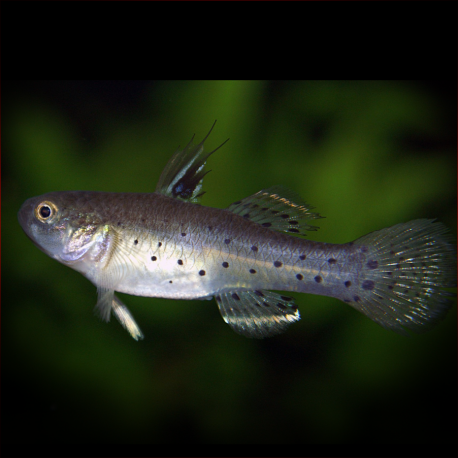More info
Datasheet
| Minimum Tank Size | 120 litres / 31.70 US gallons |
| Maximum Size | 106cm / 41.73inches |
| Temperament | Peaceful |
| Care Description | Easy |
| Temperature | 23.3°C / 73.94°F - 26.1°C / 78.98°F |
| Specific Gravity | 1-1.011 |
| Carbonate Hardness | 9-19 |
| pH | 7.0-8.0 |
General Description
The Fan Dance Goby, also known as the Knight Goby, hails from Asia and boasts a striking appearance with a predominantly silver body adorned with numerous black dots across its fins. The distinguishing feature of this goby is its impressive, full fins that resemble a fan, hence its common name.
Aquarium Setup
To replicate its natural habitat, an aquarium for the Fan Dance Goby should ideally feature an abundance of plants and rocks to provide ample hiding spots. Suitable for both freshwater and brackish water setups, this species thrives best in slightly salty water; therefore, incorporating salt into the aquarium is advisable. Live or artificial plants are recommended, with a preference for varieties tolerant of elevated salt levels.
Behaviour
Known for its shy demeanor, the Fan Dance Goby benefits from a habitat furnished with hiding places among plants and rocks. This peaceful species tends to exhibit territorial behavior, particularly during breeding periods, and can coexist harmoniously with a variety of tank mates.
Feeding and Diet
As an omnivorous species, the Fan Dance Goby sustains a balanced diet comprising quality flake food supplemented with meaty treats such as brine shrimp, bloodworms, or tubifex worms. Providing a varied diet ensures optimal health and vitality in this fish.
Reproduction & Dimorphism
Male Fan Dance Gobies flaunt larger fins compared to their female counterparts, which exhibit a smaller size and a light yellow coloration. During the breeding season, these gobies typically lay their eggs on the ceiling of caves or flowerpots, with the male assuming the role of guarding the eggs diligently.
Habitat and Distribution
In the wild, the Fan Dance Goby inhabits freshwater and brackish water environments across Asian regions. With a preference for habitats rich in plant life and rocky formations, this species can be found navigating the waters of its native territories.

